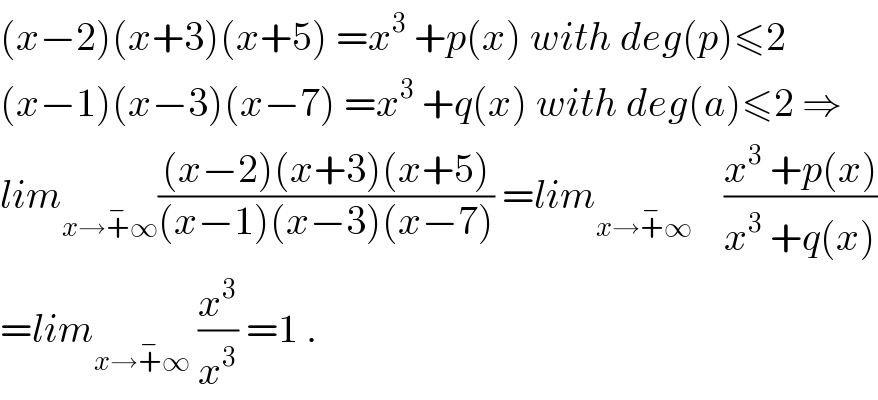
Question and Answers Forum
Question Number 69075 by Aditya789 last updated on 19/Sep/19

Commented by Prithwish sen last updated on 19/Sep/19

Commented by mathmax by abdo last updated on 19/Sep/19

| ||
Question and Answers Forum | ||
Question Number 69075 by Aditya789 last updated on 19/Sep/19 | ||
 | ||
Commented by Prithwish sen last updated on 19/Sep/19 | ||
 | ||
Commented by mathmax by abdo last updated on 19/Sep/19 | ||
 | ||